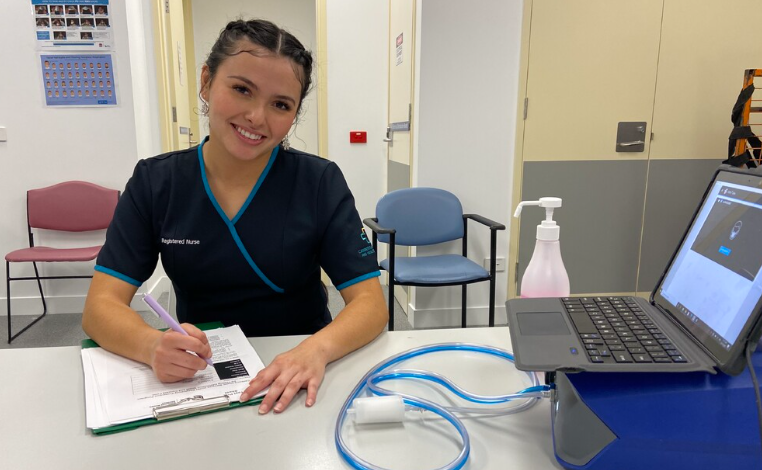What Your Risk Register Software Should Be Telling You About Mask Fit Testing (But Probably Isn’t)

Organizations in Australia, ranging from mining, civil construction, and fabrication to waste management, are increasingly focusing on the discussion of respiratory protection. As airborne hazards like crystalline silica, welding fumes, and chemical vapors come under greater scrutiny, mask fit testing has become an essential component of safety programs.
Despite the presence of high-end risk register software, the majority of organizations fail to meaningfully integrate fit mask testing into their risk workflows.
Mask fit testing integration is particularly important within the current WHS climate, where respiratory protection extends beyond compliance. WHS regulations mandate that respiratory protection must be tracked, verified, and monitored alongside critical risks. Your risk register software has the functionality to enable these features.
Risk Registers Are Changing — What About Respiratory Risk?
Risk register software in Australia has come a long way from a simple list of risks and mitigation actions to a more advanced structure that aids:
– Automated control tracking
– Role-based accountability
– Integration with legislation libraries
– Live dashboards and analytics
However, for many high-risk activities that require RPE (Respiratory Protective Equipment), the fit testing is often siloed from the rest of the RPE controls. These processes are managed via email reminders, spreadsheets, or consultant reports stored in non-integrated folders.
These disjointed processes result in gaps. A control is only effective if it is implemented and properly managed. Validation through fit testing for RPE controls is crucial — without it, risk cannot be managed. What many organizations fail to realize is that by not tracking fit testing in the risk register, the system is fundamentally flawed and not only incomplete, but exposed.
Mask fit testing is an example of a verification of control mechanism for a workplace’s health risks.
Imagine your risk register software indicates “P2 respirators” are a control for supervising work with airborne silica dust. From that description, you gain nothing unless these conditions are fulfilled:
The worker has completed a fit test.
The test type is documented, be it quantitative or qualitative.
There is a pass or fail with corrective measures for non-pass.
The test is administered within a year or with a change of task.
The mask type is the one in use currently.
Without these datapoints, your control is still theoretical.
Your risk register software should be set up to:
Indicate needing fit tests for every RPE-associated risk.
Assign specific workers or roles to fit test records of certain controls for monitoring.
Set up parameters for certain actions to be completed automatically after set conditions are met, like mask fitting.
Permit verification of fit test status by the auditors or supervisors during inspections.
Integrating Fit Testing into Risk Review Cycles
Risk registers are not a one-off task and should be considered live documents that require verification and validation in scheduled WHS cycles after certain periods or events. Fit testing results should be in these cycles live.
For example:
When a new batch of RPE is issued, how do you note it in the risk register?
If a certain model of respirator has high fit test failure rates, is the effectiveness of the control measure being reviewed?
When a worker’s responsibilities change, is the system designed to trigger a reassessment of respiratory risks and new fit tests?
Treat fit testing as part of the lifecycle of the risk treatment plan. This means that your risk register software can’t just be a list — it has to be an integrated system that links health protection with task execution in the field.
See also: Why a Home Health Care Agency is Essential for Senior Well-being
Closing the Divide Between Safety Officers and System Users
Frequently, the WHS team appreciates the need for fit testing, but configuration is done by IT or operations. This creates the problem of a lack of connection between risk system logic and field expertise.
To address this issue, Australian organizations must ensure their risk register software:
Has fields for control validation dates, captures more than just description boxes.
Is tailored to monitor specific worker elements, as opposed to tracking general mitigation strategies.
Permits data upload from or integration with fit test contractors.
Integrates fit test status with risk scores where applicable (for example, unfit equates to high residual risk).
This is what ensures the risk register is a fully integrated system as opposed to merely a checklist.
The Business Case: Missed Visibility, Avoidable Liability
In environments where WHS regulators and unions are actively monitoring and enforcing fit testing and respirator processes, lack of fit testing data can result in:
Restraining orders
Monetary penalties
Worker compensation lawsuits
Damage to brand reputation
Risk register software configured correctly will protect your company. It creates a legally defensible record showing:
Hazards were identified
Appropriate controls RPE were selected
Approved fit testing confirmed controls
Follow up occurred when failures were documented
Conclusion: Fit Testing Is a Live Control, Your Risk Register Should Treat It Like One
If your risk register software is not prompting, tracking, or verifying mask fit testing, then your software is not supporting WHS compliance — it is actively working against compliance.
Given the current Australian regulatory environment, any competent risk management software needs to incorporate the human factors which dictate control verification. Mask fit testing is one of the most quantifiable and impactful areas where this needs to happen.
Ultimately, a control is only as effective as the system that guarantees it functions properly for each and every employee, every single time.


